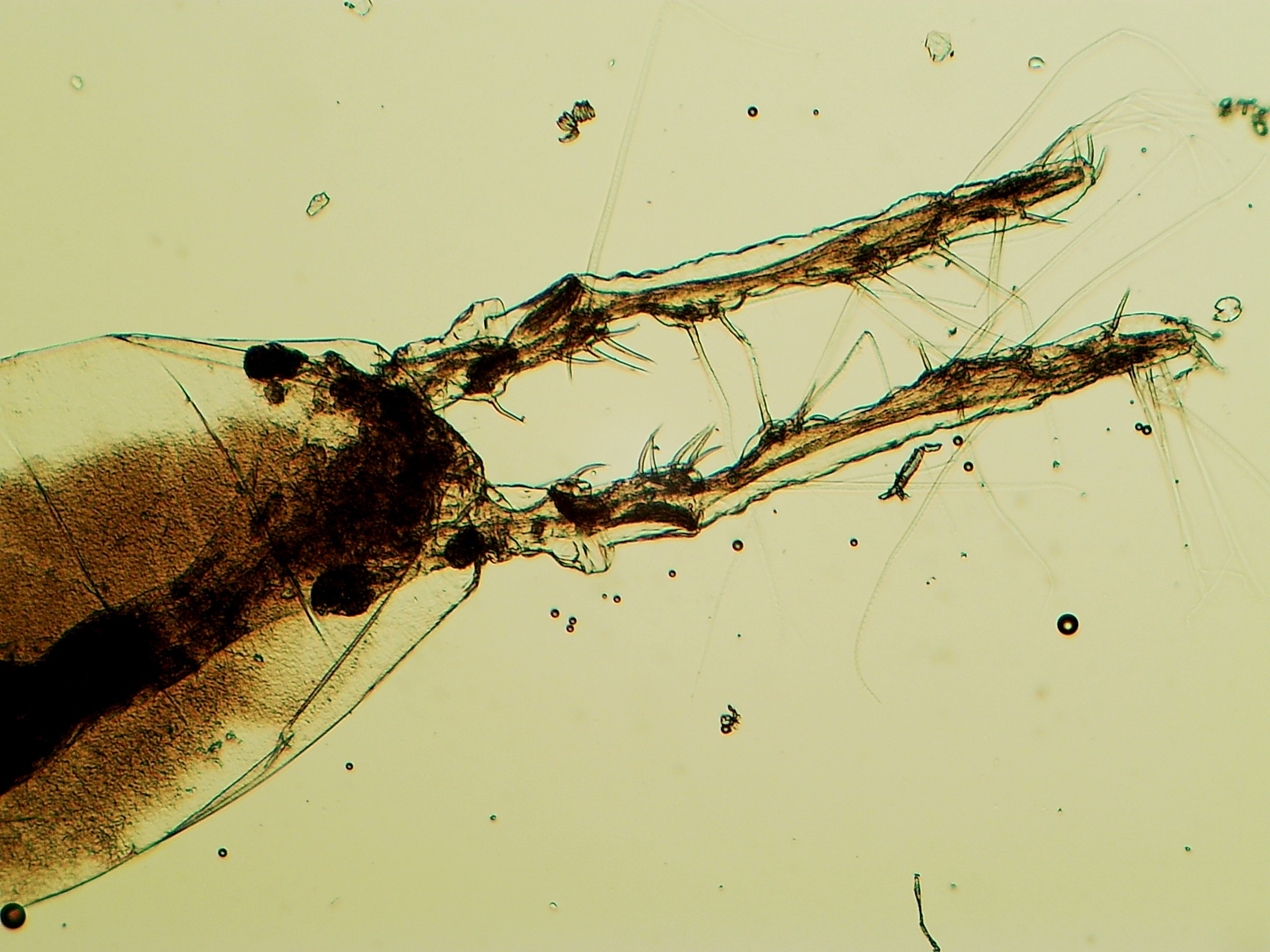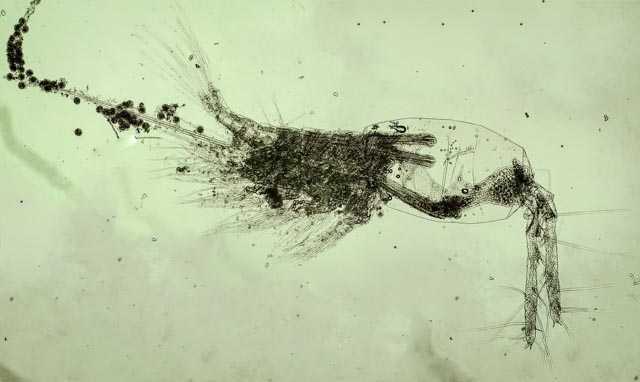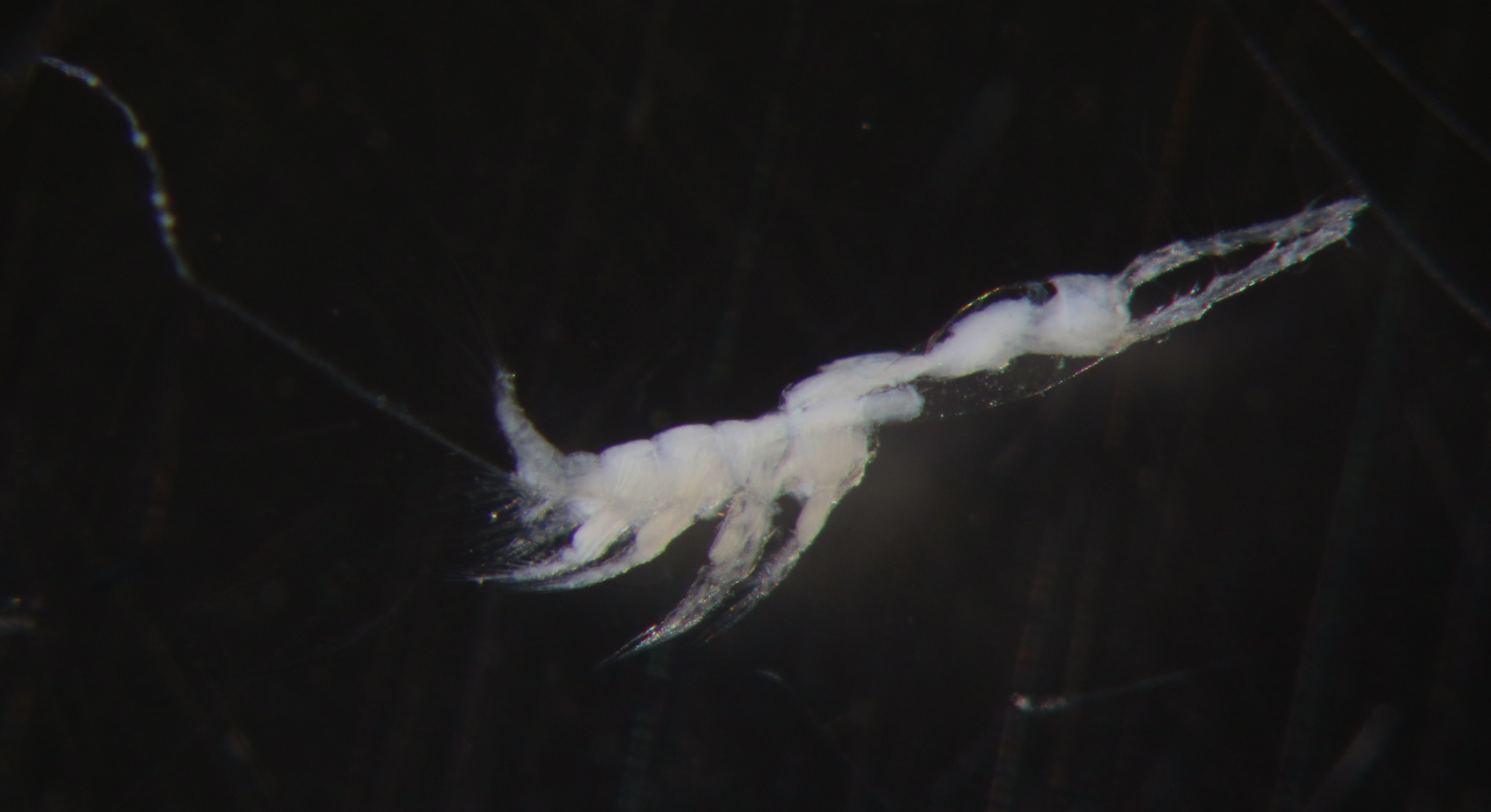The Wrack
The Wrack is the Wells Reserve blog, our collective logbook on the web.
The Wrack is the Wells Reserve blog, our collective logbook on the web.
While sorting through samples in the lab a few weeks ago, Dr. Lee Pollock stumbled across a unique and uncommon copepod from the suborder Monstrilloida. This "little monster-like" animal gets its name from its parasitic nature and striking appearance. As non-feeding adults, these zooplankton lack mouth parts and have just one distinct pair of antennae.



Dr. Lee Pollock, professor emeritus of Drew University, has been committed to marine invertebrates and the New England coast for most of his life. After receiving an undergraduate degree from Bates College, Lee worked toward his masters and doctorate through the University of New Hampshire while at the Marine Biological Lab in Woods Hole, Massachusetts, before teaching for 33 years in the biology department at Drew University.
Lee's research centered on "water bears," which are marine members of the phylum Tardigrada, and other aspects of benthic invertebrates in marine and freshwater sediments. Now into retirement, he is happy to be back in a research lab "without having to attend all the meetings."
Dr. Sylvia Pollock, Lee's wife, joins him each week in the Coastal Ecology Center. As a retired clinical psychologist, Sylvia jokes she is here to "make sure the American eels are in good mental health." But really, she recognizes the importance of scientific research and the significance of careful data entry, so she has been entering historical water quality data collected in the early years of the SWMP program.
After 10 years living in the White Mountains, Lee and Sylvia are delighted to be back on the ocean — living in Kittery and being involved here at the reserve.
Lee's expertise allowed him to recognize these invertebrates as unusual. Upon finding them in a sample, he was determined to identify what they were. After some research in the literature, he identified them to the suborder Monstrilloida. This identification has given us all a chance to learn about these "little monsters," though the biology and ecology of Monstrillidae are not well known or documented.

As juveniles, monstrillids are endoparasites, living within benthic invertebrates like marine worms and snails. When they reach adulthood, they depart their host and spend an unknown but brief period in the plankton "sea soup" as non-feeding adults. This is presumably when they reproduce.
Catching monstrillids in plankton nets is not common, but does happen in shallow coastal environments. Because we have been collecting at Wells Harbor four times a month over many years for our larval fish study, Dr. Pollock has a lot of samples available for investigating the timing of their occurrence. So far, he has found most specimens in May and June samples.
Monstrilloida from Maine were documented in a 1982 paper that leaves many questions unanswered, but Dr. Pollock has catalyzed our interest in discovering more: How many different species are present? When do they occur in our area? How long do they persist as adults within the plankton community?
Lee and Sylvia's participation here as experienced scientists has been a great supplement to our volunteer force. Having a well equipped research lab available near the Pollocks' new home has enabled them to continue scientific pursuits at their own pace in a collegial environment with our resident scientists. We are very fortunate to have them here!